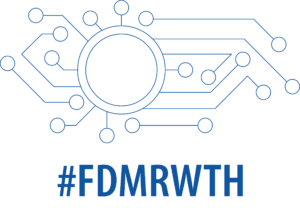Source: Freepik
“No one has the time to tidy up, but everyone has the time to search” – this dilemma, as described by efficiency expert Jürgen Kurz, is probably familiar to many. And when dealing with research data, many researchers and scientists are also faced with the challenge of storing their research data in such a way that it is structured, documented and secured for subsequent use. After all, the work done in advance saves us a lot of nerves, time and effort in retrospect. In this article, we would like to give you some helpful tips on data organization.
The First Step: Organizing Data
Are you new to a research group and at the beginning of your research work? Then it is important to clarify possible predefined structures within your research group in advance. If there are predefined structures, you can orientate yourself on best practices in the next step.
Folder structures must be created for efficient data organisation. Consider beforehand how you want to name data that belongs together in terms of structure or content. The clearest way is to create two to three subfolder levels as a folder hierarchy. In order to minimise the number of folders and subfolders, you should examine which data needs to be saved and which does not once the project has been completed.
Overview of Data Organization
- use existing standards and best practices
- store (research) data in folders
- use systematic and content-related folder names
- use a maximum of three subfolder levels
- ensure which data is still required once the project is complete.
The Second Step: Setting up Version Control
Now that you have succeeded in organising the data in folder structures, it is important to manage the individual data and data records efficiently. This is particularly important if your data records are subject to changes during the course of your research. Therefore, you should always ensure that version control works well.
A clear and self-explanatory naming convention is considered to be at the heart of efficient version control. The designation of the individual data records should be consecutive and contain both the version number and the date of storage. To facilitate later sorting, the date should be specified in the format “YYYYMMDD”. If the data record has been finally edited, the corresponding version should also be renamed “Final version”.
We hope that this article has helped you to advance your data organization and wish you every success in managing your data!
More Information
If you have any questions about RDM in general, simply contact the IT-ServiceDesk. The RDM team looks forward to hearing from you.
Responsible for the content of this article is Lina-Louise Kaulbach.
The following source was used as a source of knowledge for the following article:





Leave a Reply
You must be logged in to post a comment.